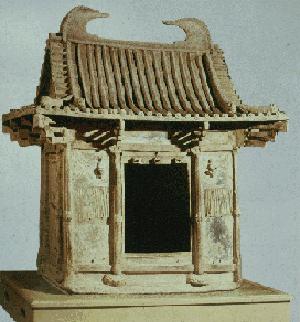An ancient civilized nation and a great country on the East Asian continent, China possesses a vast territory covering 9.6 million square kilometers, and a population accounting for over one-fifth of the world's total, with 56 nationalities and a recorded history of 3,000 years, during which it has created a unique, outstanding traditional Chinese Culture. China's architectural art is a particularly beautiful branch in the tree of Chinese civilization.

Generally speaking, there were about seven main independent architectural systems in the ancient world, some of which had long been interrupted, or had not been widely circulated. Therefore their achievements and influence were relatively limited, such as ancient Egyptian, West Asian, Indian and American structures. Only Chinese, European and Islamic structures are considered to be the world's three major architectural systems. The Chinese and European structures continued over the longest period of time and spread over the widest area and therefore they gained more brilliant achievements. Traditional Chinese architecture is based mainly on Han architecture, comprising roughly 15 types such as city, palace, temple, mausoleum, monastery, Buddhist pagoda, grottoes, garden, government office, folk public building, landscape, tower and pavilion, imperial palace, residential house, great wall and bridge.
China's earliest prehistoric structures were born at the juncture of the Old and New Stone Age about 10,000 years ago, when primitive agriculture began to emerge and people's desire to settle in one place began to become stronger. Structures (such as caves), which showed the earliest initial demand for beauty, i.e., the artistic demand in its broad sense, appeared in the middle and later parts of the New Stone Age around 4,000 years BC.
In the long process of development, China's architecture has consistently kept intact the basic character of the system. In the Shang Dynasty (17th century-11th century BC), palaces and mausoleums of large scale appeared. It is during the Western Zhou and Spring & Autumn periods that cities came into being, and the appearance and wide practice of tiles at that time was a great step forward in Chinese architectural history. In terms of a structural system, traditional Chinese structures ended in the early 20th century. Chinese architecture has spread to the vast East Asian region, including the countries of Korea, Japan, Viet Nam and Mongolia, which combine to form the East Asian architecture centered on China. During the Ming and Qing dynasties, China's architecture, particularly its horticulture differed completely from the Western one. It began to become known to Europe and exercised some influence. As far back as the Han and Jin dynasties, Chinese architecture had accepted influences from South and Central Asia, which had been merged into an organic part of Chinese architecture through the long process of history.
Today, based on its traditional soil, Chinese architecture has absorbed foreign architectural culture and continued to forge ahead by complying with the requirements of our time and using new architectural techniques. Over the past 10 to 20 years, in particular, Chinese architecture, with the new period of reform and opening up as the turning point, has stridden forward at a rapid pace and gained initial, gratifying achievements.











